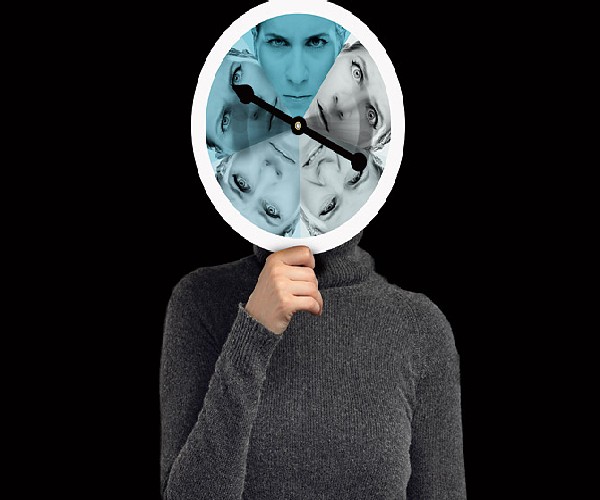Borderline Personality is a disorder which is intensely emotional in nature. This kind of disorder causes emotional instability. It thus tends to disturb, increase the stress levels and makes you distort the image you have of your own self. You basically feel useless, not worth living, and primordially flawed in all the ways. A person suffering from a borderline personality disorder would snap easily, get angry impulsively, that might draw away your closed ones as well. Although people with this disorder would want love relationships, yet their mood swings might drive their loved ones away. However, there is a diagnosis available for this disorder and it can be cured with proper treatment.
Causes
There are several causes for borderline personality disorder, however, the exact reasons are not fully evolved or understood. Some of the common causes of this disorder are:
1. The environmental factor
Environmental factor refers to the background of the person who is suffering from this disorder. Borderline personality disorder is often a result of any kind of abuse during childhood, an absolute neglect by companions, family and friends, and a bare separation from the loving and care giving persons.
2. Genetics
A study indicates that such disorders might be inherited through generations. This study is based on behavior of twins and puts forward the fact that borderline personality disorder can sometimes be present in the genes.
3. Abnormalities in the brain
Researches have shown that there could be a change in certain areas of the brain that may result into emotional manifestations including aggressiveness and impulsive behavior. In such cases, a chemical found in the brain called serotonin, may fail to work. And thus the person frames a distorted image about himself.
Symptoms
People affected by borderline personality disorder, are usually unsure about themselves and how they behave with others. A budding sense of insecurity prevails within them and they find it tough to accept the blues or hardships in their life. They see things as red or black. Various symptoms thus include:
1. Random display of varying emotions
The person exhibits staunch emotions that appear and disappear quite frequently. This would involve a desire to have loving relationships and yet driving away the same people due to mood swings and unreasonable anger.
2. Being impulsive and doing bizarre activities
People affected by this disorder show impulsiveness, which is their basic trait. They may also subject to fast and unsafe driving, gambling, having unsafe sex or taking illegal drugs.
3. Fits of anger and depression
The person would experience small-timed fits of anger and anxiety. This would in turn make them increasingly depressed about themselves and life in general.
4. Unable to control their behavior
The persons with borderline personality disorder are unable to keep a check on their emotions as studies show that serotonin, a brain chemical, stops functioning in such individuals. They might also turn suicidal with prolonged feeling of being unsure about their life.
5. Insecurity and fears
Those with the disorder, often feel a strong sense of insecurity about their life and have an all accompanying fear of being left alone.
Diagnosis
The diagnosis would only be done by a medical professional in the field. Certain important things to be kept in mind before taking appointment with the doctor include:
1. Making a list of symptoms that you or your closed ones are aware of
2. Listing out personal details about your self
3. Take a person close to you, along with you to the doctor
4. Try to jot down all the queries you want to ask the doctor
Screening Test by the doctor
After going through the above information, the doctor would perform a screening test which usually involves asking the following questions:
1. What are the symptoms of your disorder?
2. When was it that these symptoms were firstly noticed by you?
3. How and under what circumstances do you experience mood swings?
4. Are you able to manage your anger?
5. Do you tend to get bored frequently?
6. Do you feel you have your self worth intact ?
7. Have you ever been left alone or neglected in your childhood?
Based on the answers to these questions, the doctor will diagnose your problem. Besides, to be diagnosed with borderline personality disorder, you must meet the standards and criteria mentioned in the Diagnostic and Statistical Manual of Mental Disorders, (DSM). This manual gets published by the American Psychiatric Association.
Treatment
The treatment for the borderline personality disorder includes psychotherapy, hospitalization and other medications.
1. The main treatment is given by psychotherapy
The main treatment of the borderline personality disorder is done through psychotherapy. There are however two types of psychotherapy treatments available, one is Dialectical Behavior Therapy (DBT) and the other is Transference-Focused Psychotherapy (TFP)
The dialectical behavior therapy (DBT)
This mode of treatment was mainly developed to treat borderline personality disorder. It basically involves counselling. Counselling could be done in a group or via phone or through any person who is close to the affected person. The approach that has been used under DBT, is a skill-based approach which is aimed at regulating the affected person’s emotions, provide strength to tolerate distress, and hence improve all the relationships that he/she has.
The transference focused psychotherapy (TFP)
This kind of psychotherapy is all about the affected person and the therapist. The mode of treatment relies on the relationship between the person and his therapist. In this process, the therapist helps the person to understand various emotions, their meaning, and how to display them and understand them. The person is thus helped by eliminating the difficulties he might be suffering, in his relationships.
2. Other medications
Although medications can’t really cure personality disorder but they can help curb the anxiety, depression and greater impulsive thoughts and actions. Thus, various medications include anti-depressents and anti-anxiety and anti-psychotic drugs.
3. Hospitalization
In the cases where the person suffering from this disorder needs a more intense treatment, he might be treated in a psychiatric hospital or any other clinic.
Prevention
The following ways can be adopted to prevent your self from borderline personality disorder:
1. Taking therapy sessions after consulting
To prevent the problem from escalating to a new height, the affected person should consult a psychiatrist and take the therapy sessions as advised by the expert.
2. Develop relationships and not blaming your self
The person should try to develop relationships with people around him and not always blame himself for his aloofness. The persons should instead recognize his problem and take up the required treatment.
3. Not being fearful and embarrassed about the disorder
The person with this disorder should never feel ashamed about his condition, in fact he should take the first step to fight against all his fears and come out strong for the treatment.
4. Taking help and support
At times when the person with this disorder feels low and alone, he must try to reach out to the near and dear ones and confine in them about the problem. And if need be, then ask one among them, to accompany him to the doctor’s place.
Frequently Asked Questions
1. What are the other kinds of personality disorders ?
The other disorders include eating disorders, bipolar disorders and general anxiety disorders.
2. Does borderline personality disorder last all life long?
No, the borderline personality disorder once diagnosed, can be treated and cured.
3. Can children and adolescents also be diagnosed with the borderline personality disorder?
Yes, children and adolescents can be diagnosed with BPD as the personality is still getting formed during adolescence.
4. Is BPD a variation of bipolar disorder?
Although the symptoms of both BPD and bipolar disorder might appear similar, yet they do not co-exist and are not same in nature.
5. Is BPD mostly found in women?
Yes, though BPD is found in both the genders, yet men only make up for 25 percent of this community. The symptoms faced by men and women might differ but the underlying causes are usually the same.




